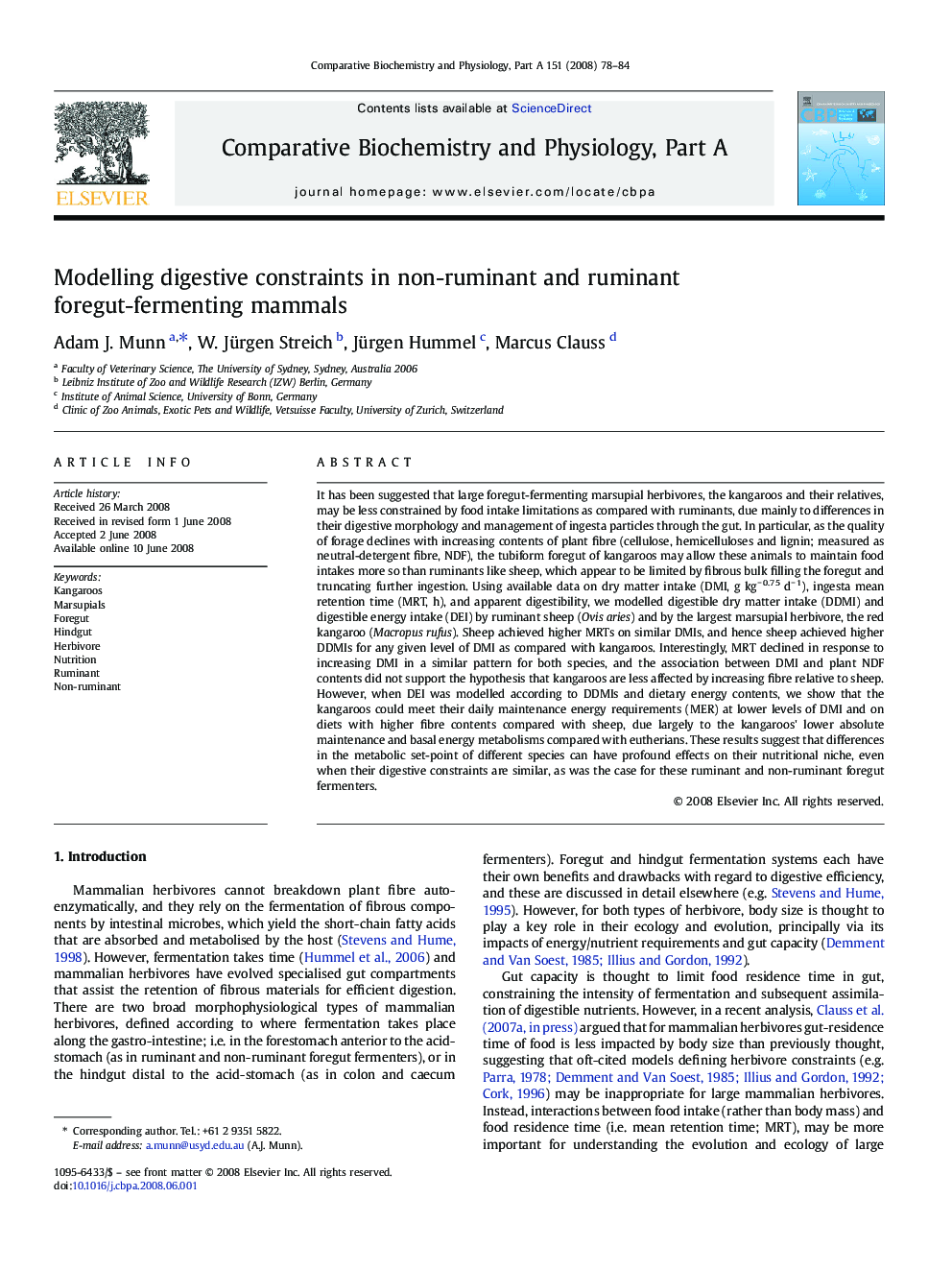| کد مقاله | کد نشریه | سال انتشار | مقاله انگلیسی | نسخه تمام متن |
|---|---|---|---|---|
| 1973495 | 1060319 | 2008 | 7 صفحه PDF | دانلود رایگان |

It has been suggested that large foregut-fermenting marsupial herbivores, the kangaroos and their relatives, may be less constrained by food intake limitations as compared with ruminants, due mainly to differences in their digestive morphology and management of ingesta particles through the gut. In particular, as the quality of forage declines with increasing contents of plant fibre (cellulose, hemicelluloses and lignin; measured as neutral-detergent fibre, NDF), the tubiform foregut of kangaroos may allow these animals to maintain food intakes more so than ruminants like sheep, which appear to be limited by fibrous bulk filling the foregut and truncating further ingestion. Using available data on dry matter intake (DMI, g kg− 0.75 d− 1), ingesta mean retention time (MRT, h), and apparent digestibility, we modelled digestible dry matter intake (DDMI) and digestible energy intake (DEI) by ruminant sheep (Ovis aries) and by the largest marsupial herbivore, the red kangaroo (Macropus rufus). Sheep achieved higher MRTs on similar DMIs, and hence sheep achieved higher DDMIs for any given level of DMI as compared with kangaroos. Interestingly, MRT declined in response to increasing DMI in a similar pattern for both species, and the association between DMI and plant NDF contents did not support the hypothesis that kangaroos are less affected by increasing fibre relative to sheep. However, when DEI was modelled according to DDMIs and dietary energy contents, we show that the kangaroos could meet their daily maintenance energy requirements (MER) at lower levels of DMI and on diets with higher fibre contents compared with sheep, due largely to the kangaroos' lower absolute maintenance and basal energy metabolisms compared with eutherians. These results suggest that differences in the metabolic set-point of different species can have profound effects on their nutritional niche, even when their digestive constraints are similar, as was the case for these ruminant and non-ruminant foregut fermenters.
Journal: Comparative Biochemistry and Physiology Part A: Molecular & Integrative Physiology - Volume 151, Issue 1, September 2008, Pages 78–84